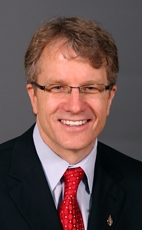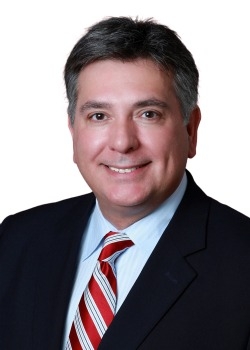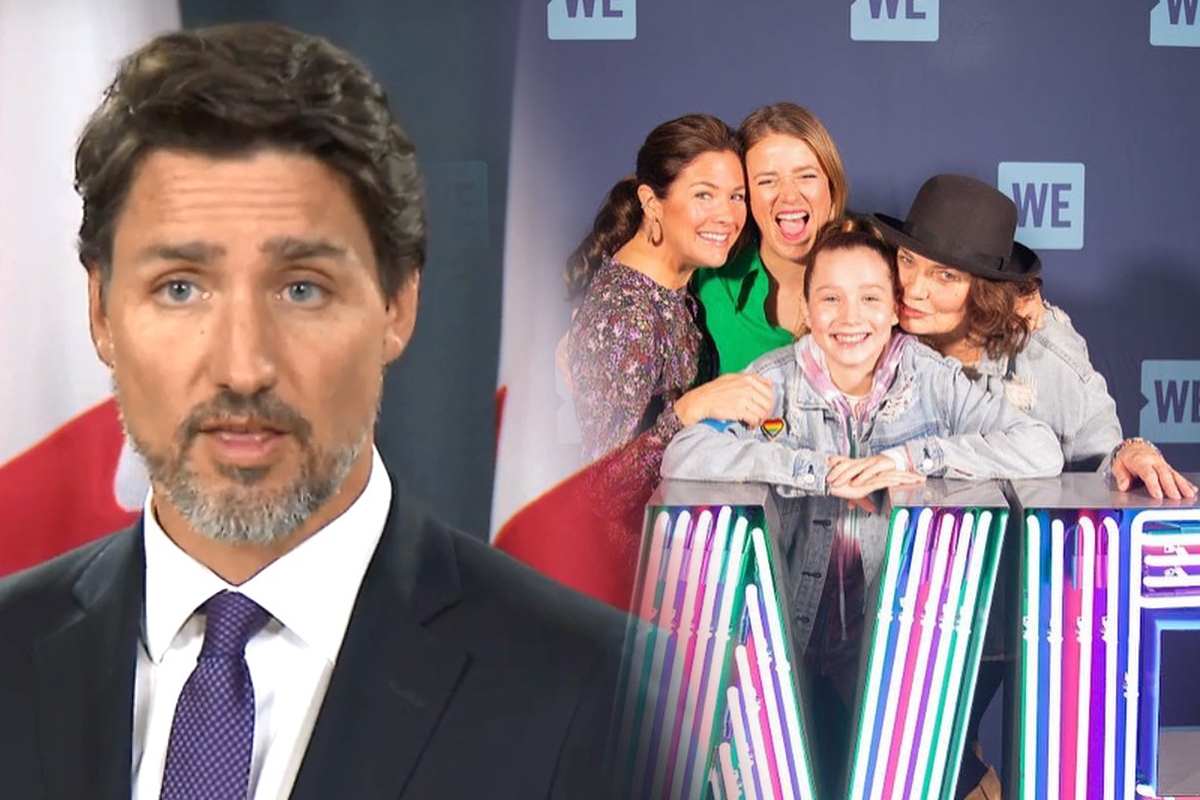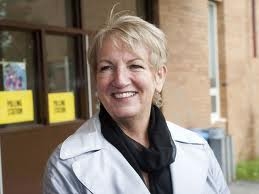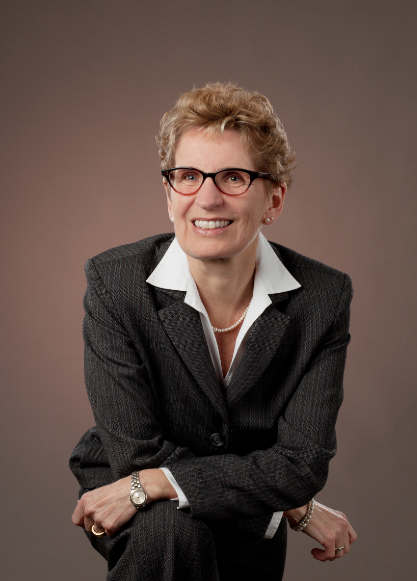
The Uncertain Road Ahead: The Ontario Liberal Party Unexpectedly Searches for a New Leader
On October 15, 2012, Dalton McGuinty unexpectedly announced his intention to retire, signaling the end of his nine-year reign as the Liberal Premier of Ontario and more than two decades as the Member of Provincial Parliament (MPP) for Ottawa South. While McGuinty’s announcement caught many Ontarians by surprise, an even greater surprise was his decision to abruptly prorogue the Ontario Legislature. Declaring that “my responsibility is to look to the future, and to ensure that we renew our party,” McGuinty was adamant that neither decision bore any relation to the growing political controversy surrounding the rising costs for taxpayers resulting from his government’s decision to relocate two new electricity-generating power stations which, had they been built in the initially-proposed locations, could have cost his party two seats in the 2011 election.
With McGuinty’s announcement, the Ontario Liberal Party suddenly required a new leader, someone who would automatically become Ontario’s 25th Premier but who would also inherit a minority government. A pool of six candidates — four men (Eric Hoskins, Gerard Kennedy, Charles Sousa and Harinder Takhar) and two women (Sandra Pupatello and Kathleen Wynne) — are vying to succeed McGuinty at the January 2013 leadership convention in Toronto. But while the candidates have entered a race which McGuinty stated would renew the Ontario Liberal Party, each candidate has served as a McGuinty cabinet minister at one time or another. No matter which candidate moves into the Premier’s office, he or she will have to resolve some thorny issues to retain the premiership in the next provincial election.
During his years in power, McGuinty built a record that included many successes. However, his tenure since 2007 was increasingly defined by government scandals characterized by poor management and surprising losses of taxpayer dollars: more than $1 billion on eHealth’s failed attempt to develop electronic health records for Ontarians, ORNGE’s allocation of about $200 million in taxpayers’ money for questionable investments unrelated to running the province’s air ambulance service, and an estimated waste of $750 million to $1 billion in costs associated with the decision to halt construction of two power stations and move at least one of them to Napanee in Eastern Ontario.
Then there has been the ongoing controversy about the Liquor Control Board of Ontario (LCBO) which has paid its management team millions of dollars in bonuses during the McGuinty years – even though it is a government monopoly with no competition. The LCBO has a reputation for being secretive and for showcasing expensive brands while Ontario wineries have difficulty accessing LCBO stores to promote their products. In McGuinty’s first term, the government issued a report recommending privatization of the bloated agency, but the report was buried – even though it suggested that Ontario would make over $200 million more annually in tax revenues if the LCBO were privatized. Ontario Ministers are silent on why the agency — appointments to which are controlled by the governing party — is allowed to pay its management team bonuses for a no-risk enterprise.
Furthermore, the government the Premier leaves behind has become embroiled in disputes with various segments of Ontario’s population. Attempts to reduce the government’s nearly $14-billion deficit have angered its traditionally supportive constituency of public workers. One need only think of the ongoing dispute with Ontario’s teachers which has led to province-wide strike action in December 2012 or the unilaterally-imposed, large-scale alternative energy projects in rural communities. However, no policy has alienated Ontarians more than the government’s abrupt decision to end the Slots-at-Racetracks Program, a public-private revenue-sharing agreement between the government and Ontario’s horse racing and equine industry.
In December 2012, Ottawa Life Magazine undertook to interview the seven leadership candidates on issues of importance to Ontarians. All but Sandra Pupatello and Harinder Takhar made themselves available to comment on critical issues related to what they would do if they became Premier.
Cancellation of the Slots-at-Racetracks Program (SARP)
The government’s unilateral and unexpected March 2012 announcement about canceling the lucrative SARP (which, since its inception in 1998, has annually generated more than $1 billion in revenue for Ontario) was a blow to the gaming, racing and equine industries in Ontario. Under SARP, profits from slot machines at the tracks were split between the government, the horse racing and equine industry and the rural municipalities where the machines were located. The demise of this program on March 31, 2013 will decimate the horse racing and equine industry, impacting the 60,000 Ontarians who work directly in the industry or in its ancillary sectors, ranging from saddlers and trailer dealers to farmers and blacksmiths. Each of the leadership candidates interviewed by Ottawa Life expressed an opinion on the demise of SARP.
Kathleen Wynne declared that, should she become Premier, she would assume the portfolio of Ontario Minister of Agriculture, Food and Rural Affairs for at least one year to show that her government is taking the concerns of rural Ontarians seriously. She stated: “I think we do need a viable industry. There are thousands of jobs associated with this industry and I think we need sober second thought on the support that needs to be in place for it.” But she did not expand upon what that sober second thought would entail. Asked what the horse racing industry in Ontario might look like in the future, Wynne responded that: “It will go through a transition. It will look different in a few years but I don’t think anyone is saying that’s a bad thing.” However, as to what she would do if the government-appointed Horse Racing Transition Panel were unable to produce an agreement acceptable to all stakeholders, Wynne responded by observing that life and politics can be characterized as a “series of conversations” which she was confident would be given greater priority in her government.
Wynne, a longtime McGuinty cabinet minister who was in cabinet when the decision to end SARP was made, was questioned about the apparent lack of consultation with the industry prior to the SARP announcement. Admitting that the consultation “probably wasn’t as robust as it should have been,” she stated that money and anxiety can be saved “by talking to people first so that you actually know what it is you’re walking into; if we had this to do again, we probably would have had some of these conversations up front so we wouldn’t have been in reactive mode.”
When asked why she thought that Finance Minister Dwight Duncan has repeatedly characterized SARP as a subsidy when it is a public-private revenue-sharing agreement, Wynne provided a theoretical response that quickly shifted to the defensive. She felt that “There was a semantic argument about what exactly the words meant” and that “the subsidy language was inflammatory to the sector.” She expressed confidence that the Horse Racing Transition Panel would be able to develop the proper language in referring to SARP… but: “The reality is that it was revenue that could have been used by the provincial treasury that was being used to stabilize the industry.”
Like Wynne, Gerard Kennedy expressed regret about the lack of consultation prior to the announcement of the phasing-out of SARP. He felt that “ending the Program has had a damaging impact” and that “the government didn’t take the time to examine the likely consequences of its actions.” Kennedy indicated that he is “very curious” to see the final recommendations of the Ontario Horse Racing Transition Panel. On the government’s treatment of SARP, he opined: “There are other options and it’s a mistake that we didn’t get to address these options from the beginning.” While Kennedy was not explicit about these other options, he hinted at what they might be when he addressed the controversial budget initiative entitled Modernizing the Ontario Lottery and Gaming Corporation (OLG): “I’m not convinced the existing strategy would work and I’m hoping to review it. I’m much more comfortable with slots and gaming being located at designated safe places for gambling in the province — like they were when they were located at the province’s horse racing tracks — than at casino locations in downtown areas.”
Pointing out that he was not a cabinet minister in the McGuinty government when the decision to end SARP was made, Kennedy felt unable to comment on the justification for the language used by the government in referring to the program as a subsidy. While he maintained that “the revenue-sharing associated with SARP was disproportionately beneficial to the government,” Kennedy felt that any solution must allow for “a viable industry” and that “partnerships of any kind require more respect than was the case with SARP.”
Charles Sousa, the candidate who left a career in Canada’s financial services sector to serve at Queen’s Park, agrees that the horse racing industry is critical to Ontario and, like some of his competitors, maintains that “consultation with the industry is also crucial.” Without describing that consultation process or stating whether or not he would review the decision to end SARP, Sousa explained that he wants to make the industry more self-sufficient by better promoting it at home and abroad through “a successful marketing procedure that can play a role in drawing in more revenue to the province’s horse racing industry, thereby making it more financially sustainable.” When the discussion turned to his thoughts on the framing of SARP as a subsidy, seeing it as a fiscal issue and not semantics, Sousa said that: “What’s important is that we have to get the best value for money. What concerns me is the question of how we are going to continue to grow the industry and reshape things in a way that enables the government partnership to work effectively and efficiently.”
Eric Hoskins, who represents the St. Paul’s riding, is a physician and co-founder and president of War Child Canada, a non-profit organization for building awareness and support for war-affected children. He was the first of the candidates to take a clear position on SARP by referring to the importance of Ontario’s horse racing industry in his Respect for Rural Ontario platform. When speaking with Ottawa Life, Hoskins went further than any other candidate by saying that he “would review the decision to end the Slots-at-Racetracks Program in the first 60 days as Premier” and “would build on what was learned from the Horse Racing Transition Panel’s report.” While not formally endorsing it, he said he would consider certain aspects of the report “to develop a long-term, sustainable solution.”
However, unlike his competitors, Hoskins pointed out the importance of realizing that “other viable horse racing industries around the world require an investment by the public sector.” And when it came to describing the labeling of that investment by the government, Hoskins lost no time in pointing out that he has referred to SARP “as a partnership that has existed for many years with the sector” and has “committed to developing a long-term sustainable plan that solidifies this partnership.”
While the discussion on the demise of SARP dealt primarily with the fiscal (and employment) impact it will have on the province, there are other negative consequences. A spokesperson for the horse racing industry in Ottawa (who wished to remain anonymous) pointed out that: “Upwards of 13,000 horses in Ontario would need to be euthanized because of the crippling financial blow dealt to the industry and many of the province’s farms and breeders will lack the steady stream of funds required to continue to care for these animals. In other words, with the end of SARP, the cash that is needed to maintain these horses would disappear.” The direct consequence will be the slaughter of thousands of horses — a fact that has been substantiated by research undertaken by the Ontario Horse Racing Industry Association (OHRIA).
Two of the candidates, Hoskins and Sousa, expressed their thoughts on this probable outcome. When the number of horses likely to be slaughtered was brought to his attention, Hoskins said: “If that were to happen, it would be a truly tragic outcome. I think that most Ontarians would agree on that. That’s part of the reason why I have directly addressed the horse racing issue in my rural plan.”
Sousa also favors saving the horses: “I am certainly hoping that the industry will be able to take care of these horses. I am confident that breeders and other industry members will be able to safeguard these animals.”
When asked for his opinion, Bruce Roney, the executive director of the Ottawa Humane Society, stressed that: “Everybody who has made money off the horse racing industry in Ontario and the horses themselves — for example, the provincial government, the harness men, the breeders and farmers — now needs to take responsibility for the caring of these horses.” However, the buck ultimately stops with the Ontario government’s Horse Racing Transition Panel. Roney foresees a problem because he claims that, when it comes to the industry stakeholders and the Ontario government: “These don’t seem to be groups of people who are sitting down and working things out. Consequently, I’m not optimistic for the horses. There was a great deal of information in the Horse Racing Transition Panel’s report on everything except the actual prolonged welfare of the horses. The animals seem to be excluded from the thought process.”
What seems very evident is that Wynne, Kennedy, Hoskins, and Sousa have been awakened to the consequences of Ontario’s decision to end a successful partnership that poured billions of dollars into the Ontario economy and supported health care and education programs. What is equally startling is that none of the candidates seemed to be aware, until questioned by OLM, that their decision will cause the death of over 13,000 horses in Ontario and the destruction of one of the most successful breeding and equine businesses in North America. Wynne, Kennedy (who was not in the cabinet and hence not a party to this decision or policy when enacted), Hoskins and Sousa, upon learning about this fact, seemed to indicate a willingness to either press the pause button and rethink the matter or to work with the industry for a solution acceptable to all stakeholders. Puppatello’s silence speaks volumes about her position on the equine and horse racing industry in Ontario. The idea that putting down 13,000 animals is of no concern to Puppatello should be something all Ontarians may wish to reflect upon.
The Ontario Green Energy Act
Since its introduction in February 2009, the Green Energy and Green Economy Act (GEA) has been the legislative tool used by the McGuinty government to implement its ambitious agenda of substantially increasing the percentage of Ontario’s energy mix founded on the use of expensive alternative energy projects. Through the implementation of the GEA, the purpose of which is to promote energy conservation and create tens of thousands of so-called “green jobs,” the McGuinty government has required the construction of wind and solar projects in many rural Ontario communities. However, there has been little consultation with the residents where these projects are situated and little time to consider the concomitant adverse health effects and the decline in property values associated with living in close proximity to certain types of renewable energy projects. Not surprisingly, the manner in which the GEA was implemented, combined with the robust increase in hydro rates since the McGuinty government first came to power, has not won the Ontario Liberals a great deal of support in rural ridings. The five leadership candidates interviewed by Ottawa Life were asked their opinions on what changes, if any, they would make to the GEA and energy policy in general should they become Premier.
All of the candidates insisted that, as Premier, they would increase the involvement of rural Ontarians in the consultation process for the placement of GEA projects. Wynne felt that communities must be engaged “in a way that makes them feel they’re part of the process, because some of the pushback we’re getting on the Green Energy Act has been because there hasn’t been enough input from municipalities and from community groups.” Kennedy said he wanted to review the Green Energy Act with respect to local decision-making: “There shouldn’t be forced placement of GEA projects.”
Sousa summed up his position: “I am advocating for more local input.”
Hoskins stressed the importance of greater consultation and said that “when one of these projects does move forward, I would expect it to have the support of the people in the community in which the project will be located.”
Some candidates also suggested the need for a more careful approach to the GEA in general. As Kennedy put it: “People deserve to see clearly how much this is going to cost, how many jobs it will create, and if we are really making viable industries out of the government’s investments. I’m not convinced that we’re looking fully at the costs related to a number of Green Energy Act projects.”
On the high electricity rates in Ontario, the candidates seemed to agree that, as Hoskins put it: “McGuinty inherited an energy infrastructure that was badly in need of repair. Therefore, part of the increase has been from bringing in renewable energy to compensate for the shuttering of the province’s coal-fired plants. However, this came with a cost. It has required us to replace the power previously generated from coal with new infrastructure.”
Sousa said that one of the reasons why rates are so high in Ontario is that “much of the power that is generated [through alternative means] cannot get to the grid,” thus placing an increased burden on the system. “Upgrading our energy sources will allow us, over time, to lower our debt load and contain our rates.”
However, all seven candidates admitted that it would be easier for Ontarians to lower their electricity rates through practicing better conservation by using electricity at off-peak hours.
Transportation/Traffic
The five candidates who spoke with Ottawa Life also shed light on how they would approach the broader challenge of transportation in a society where an ever-growing number of people are on the move. According to the candidates, the most pressing transportation issue facing Ontarians is urban traffic and congestion. All of the candidates stressed the importance of investing more in public transit to reduce traffic in Ontario’s major cities, but there were subtle differences in opinion.
For instance, Wynne pointed out that for decades Ontario has made investments in transit inconsistently, noting that: “We’ve always had a plan to invest in roads. We’ve always had a plan to invest in bridges. We have a five-year highway plan. But we haven’t had that for transit. So, we need an incremental plan.”
To meet the challenge of urban traffic congestion, Hoskins stated that: “We need a national transit strategy that takes a long-term, forward-oriented look at this challenge and guarantees investment from all levels of government.”
But as Sousa pointed out, when it comes to addressing this challenge, “it’s not just literal gridlock but also political gridlock” that is at play. Sousa said he would “reduce costs and get rid of layers of bureaucracy” and would move ahead “with a high-speed rail project from Windsor to Quebec City.” Kennedy argued that “some of our transit isn’t necessarily in the right places” and that he would “like to explore tax incentives to provide an offset to people who live near where they work.” Kennedy also noted that an optimally functioning transit system will be more important in the years ahead when there will be “a greater population of aging people needing to get from point A to point B but who cannot drive themselves.”
Prorogation
The candidates were asked to discuss their thoughts on McGuinty’s surprise decision to prorogue the Ontario Legislature. Since all are current or past McGuinty cabinet ministers, it should come as no surprise that none of the candidates interviewed by Ottawa Life objected to the decision nor did they equate it with the controversy surrounding the two displaced power plants. Perhaps Sousa’s comments best captured their reaction: “Am I happy that the government prorogued? No. Was it necessary? I think so.” Sousa justified his response by explaining that “nothing was getting done in the Legislature and a lot of political games were being played.” All the other candidates echoed this response. In fact, even Gerard Kennedy, who was not a sitting member at the time of prorogation, commented that “a lot of poisonous hyper-partisanship has been going on in the Legislature, thereby preventing any constructive work from being accomplished.”
Nevertheless, the candidates did offer their opinions on the circumstances that warranted the use of prorogation. “It should only be used as an administrative device and should not be used as a political weapon,” Kennedy noted. Hoskins maintained that “prorogation should be used without exception as a tool of absolute last resort.” Wynne believes the decision to prorogue the Legislature has created discomfort, but not for her. “What I know is that there is discomfort among members about being out of the Legislature, and there is discomfort among Ontarians that the Legislature is not sitting when they expect it to be sitting. So, my antidote to that is to get back to the Legislature as soon as possible.” All of the candidates vowed to reopen the Ontario Legislature at the first opportunity, which is likely to be February 19, 2013.
Deficit
With Ontario’s budget deficit projected at $14.4 billion for fiscal 2012-13 compared to the roughly $5.6 billion in fiscal 2003-04 when the McGuinty Liberals formed their first majority government and with commitments from each candidate to pay down Ontario’s deficit by 2017-18, a discussion of the means to achieve this difficult end was pursued. All of the candidates provided responses that emphasized streamlining the approval of infrastructure projects, maintaining public sector wage constraints, and controlling government spending.
Ever the businessman, Sousa emphasized that “The best way to improve revenue is to increase economic growth.” Hoskins stated that “we need to tackle the deficit from the revenue and expenditures points of view.” That end would be achieved by raising more revenue for the province and also by reshaping government ministries and agencies to work smarter and more efficiently — the latter being a particularly difficult task given the McGuinty government’s track record.
Kennedy said the goal of paying down Ontario’s deficit by 2017-18 is “ambitious but it’s also relative” and that “changing the manner of the government’s social programs will save us substantial money.” However, Kennedy did not clearly articulate the nature of those changes to government social programs.
Wynne stated that: “The biggest thing that we can do is health care. We have to find ways to curb the growth of health-care costs.” Hoskins offered two specific ways of doing this: “We can invest more in preventative care and use existing technology better.” Hoskins said he was confident that “we can find the required savings without negatively impacting services.”
Education
Ontario’s educators are at odds with the government over Bill 115 which imposed contracts characterized by wage freezes and the cancellation of lucrative benefits related to the accumulation of sick days upon primary and secondary schoolteachers. The government implemented the legislation on January 3, 2013, and then, oddly enough, announced its projected repeal the very same day. However, the province’s teachers and their labour unions seem unwilling to accept the stricter contracts. Some have even raised the possibility of organizing further labor disruptions despite the fact that, under the terms of the new contracts ushered in by Bill 115, to do so would technically be illegal. Regardless of the virulent opposition from a segment of Ontario’s society that has traditionally been a strong and steady supporter of the McGuinty government, each candidate maintained that the Ontario Liberal government continues to have a deep and unshakable relationship with the province’s educators.
Kathleen Wynne observed that: “We’ve worked for nine years. We have built very solid relationships and we have achieved an enormous amount.” Gerard Kennedy suggested a marginally shorter timeline for the Ontario Liberal’s harmonious relationship with the province’s teachers, citing that “for 8½ out of nine years, this government has had a strong relationship with the province’s teachers.”
And when it came to discussing why the relationship between the government and teachers had deteriorated into the job action seen across the province for the past month, Wynne acknowledged that: “The process as it unfolded early on was not as good as it should have been.” Sousa said: “We could have done a better job in the way we negotiated.” While no candidate specifically outlined what could have been done to prevent the still-smoldering labour dispute, all candidates stressed the importance of having an open dialogue with Ontario’s teachers and of respecting the collective bargaining process, touting their own deal-making skills. For instance, Hoskins felt that to facilitate constructive dialogue between the government and teachers, “we need to pull out all the stops in the time we have left and this may mean the Premier getting involved.”
Children’s Aid Societies
While the labour dispute with Ontario’s teachers may be the most visible new challenge that the government and its new Premier will have to meet, concerns are emerging about the stability and efficacy of government funding for the province’s close to 50 Children’s Aid Societies (CAS), funding that is needed to protect children under the age of 16 from abuse and neglect. Avanthi Goodard, who serves as the Board of Directors’ president at the York Region CAS and who is also a member of the Board of Directors of the Ontario Association of Children’s Aid Societies (OACAS), shed some light on the problem. Ms. Goodard explained that: “Society has evolved over time but our funding model hasn’t changed. Changing the funding model to actually meet the new world is what is required.” Virginia Rowden, director of social policy at OACAS, identified the general principle that should underpin the change in funding model to ensure that CAS maintains the financial ability to provide its services to Ontarians in need: “There needs to be a socio-demographic factor built into the model so the funding takes into account demographic changes and population growth” — which has not seemed to be the case under the existing funding model. This is problematic because, as was noted in the OACAS 2012 Child Welfare Report, there is a gap of tens of millions of dollars “between the amount of funding allotted and the amount needed by CAS to deliver child protection services.”
Eric Hoskins, the Minister of Children and Youth Services, pointed out that: “Funding for the CAS is the same as last year. There was no funding decrease. The funding envelope remained intact and stable.” Nevertheless, Hoskins admitted that more needs to be done to ensure that “funds are being allocated to children’s aid societies in the most efficient manner and that they’re having the right and maximum impact on the children involved.”
Hoskins added: “With the support of the sector and a commission looking at the Children’s Aid Society welfare sector, we’re working with the sector to transform everything from the funding formula to focusing on prevention and parenting.”
In one way or another, the other candidates in the leadership race also touched on the issue of children’s aid societies. For instance, Wynne focused on the importance of increasing educational opportunities for children who are under the care of Ontario’s CAS and stressed the fact that far fewer of these children graduate from high school compared to their peers who are not in care. Kennedy voiced his concern that “the cost of children’s aid has been growing much faster than the rate of inflation due to costs associated with foster care.” As Premier, he would launch an immediate inquiry to develop a more effective funding model for Ontario’s children’s aid societies.
As Dalton McGuinty prepares to step down as Premier of Ontario, the narrative about his legacy is yet to be written and the consequences (and cost) of controversial decisions made by his government are yet to be fully absorbed by Ontarians. No matter which of the candidates is selected at the impending convention to become leader of the Ontario Liberal Party — and the new Premier — the challenges that await are daunting. Leading a minority government in as partisan a setting as the Ontario Legislature and facing tough questions about the decisions made by your predecessor’s government on issues that have deeply divided many Ontarians is not an easy task. But, then again, as Gerard Kennedy quips: “Nobody has any reason to feel sorry for politicians.”
____________________________________________
The next Ontario Liberal Party leadership election is scheduled for January 25 to 27, 2013 at Maple Leaf Gardens in Toronto.
TOP PHOTO: Kathleen Wynne: Paul Couvrette

